
INKS
Inks are transparent and can be used as a drawing or painting medium. They have a uniquely transparent quality and dry with a satin sheen. They differ from watercolour in that once dry, they are insoluble.
Drawing inks are extremely transparent and brilliant in colour but are made with dyes so are not lightfast. An alternative is acrylic inks, which are slightly thicker, still transparent and insoluble, but are made with pigment so are less likely to fade; they can be thinned with water. All inks can be mixed like paint to create new colours. Black Indian ink is extremely strong and is often used with a dipping pen for fine drawing because, when dry it is waterproof, transparent colour can then be washed over it without altering the drawing. Indian ink can also be diluted and worked with a brush to create tonal work or used for tonal underpainting. If the work is to last, look out for inks made with pigment rather than dyes.
PENS AND BRUSHES
Pen holders and drawing nibs are inexpensive. Nibs come in a variety of widths to create a varying thickness of lines. Take the nib out of the holder to wash it and avoid letting ink dry on the nib as it can lessen the flow. Avoid getting the holder too wet as the wood will crack.
Pens can be cut from thin or thick bamboo (easier when the wood is green) and produce some great lines. They are also really cheap to buy.
I tend to use round Chinese brushes mostly, or a square hake for washes – I use them on their side for depicting grass as they hold a lot of water. You’ll notice the ink may stain the hairs, but this shouldn’t make any difference to the flow. My Jackson’s Raven mop brush, which I also use for watercolour painting, is my new favourite – the quality is excellent for a synthetic brush and my conscience is squirrel free!
この記事は Artists & Illustrators の July 2020 版に掲載されています。
7 日間の Magzter GOLD 無料トライアルを開始して、何千もの厳選されたプレミアム ストーリー、9,000 以上の雑誌や新聞にアクセスしてください。
すでに購読者です ? サインイン
この記事は Artists & Illustrators の July 2020 版に掲載されています。
7 日間の Magzter GOLD 無料トライアルを開始して、何千もの厳選されたプレミアム ストーリー、9,000 以上の雑誌や新聞にアクセスしてください。
すでに購読者です? サインイン

Still life IN 3 HOURS
Former BP Portrait Award runner-up FELICIA FORTE guides you through a simple, structured approach to painting alla prima that tackles dark, average and light colours in turn
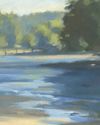
Movement in composition
Through an analysis of three masterworks, landscape painter and noted author MITCHELL ALBALA shows how you can animate landscape composition with movement
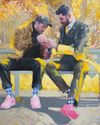
Shane Berkery
The Irish-Japanese artist talks to REBECCA BRADBURY about the innovative concepts and original colour combinations he brings to his figurative oil paintings from his Dublin garden studio
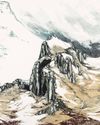
The Working Artist
Something old, something new... Our columnist LAURA BOSWELL has expert advice for balancing fresh ideas with completing half-finished work
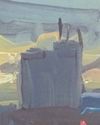
Washes AND GLAZES
Art Academy’s ROB PEPPER introduces an in-depth guide to incorporating various techniques into your next masterpiece. Artwork by STAN MILLER, CHRIS ROBINSON and MICHELE ILLING
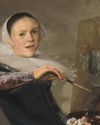
Hands
LAURA SMITH continues her new four-part series, which encourages you to draw elements of old master paintings, and this month’s focus is on capturing hands

Vincent van Gogh
To celebrate The Courtauld’s forthcoming landmark display of the troubled Dutch master’s self-portraits, STEVE PILL looks at the stories behind 10 of the most dramatic works on display
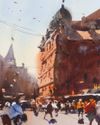
BRING THE drama
Join international watercolour maestro ALVARO CASTAGNET in London’s West End to paint a dramatic street scene
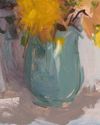
Serena Rowe
The Scottish painter tells STEVE PILL why time is precious, why emotional responses to colour are useful, and how she finds focus every day with the help of her studio wall

Bill Jacklin
Chatting over Zoom as he recovers from appendicitis, the Royal Academician tells STEVE PILL about classic scrapes in New York and his recent experiments with illustration